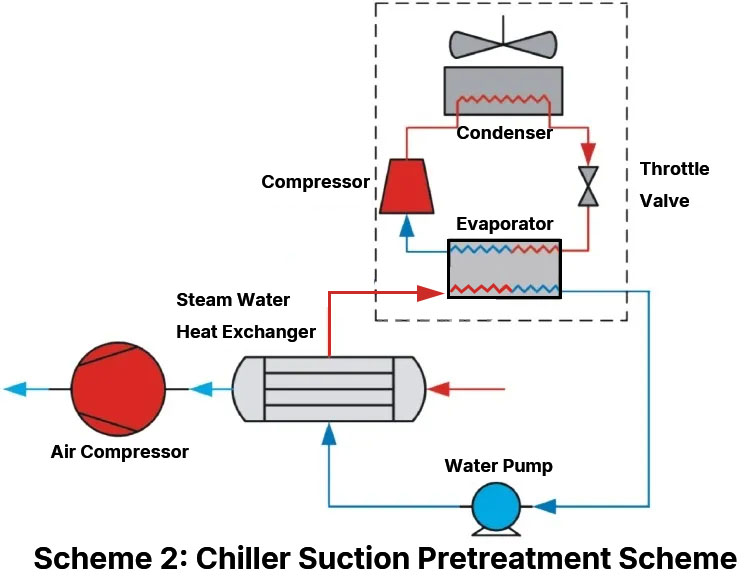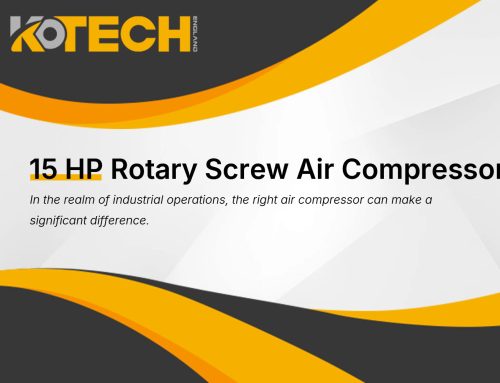
Background and Significance of Energy Conservation in Compressed Air Systems
Low-carbon and zero-carbon background
Nowadays, the global ecological environment is seriously damaged, so the climate warming and major geological events occur frequently; carbon emissions continue to grow, leading to the urban heat island effect and greenhouse effect, and the original production structure faces global challenges. Energy shortage and uneven distribution have prompted the need to accelerate the transformation of the energy structure dominated by coal.

Through China’s 《”14th Five-Year Plan” Modern Energy System Plan》, the “double carbon” goal of carbon peaking and carbon neutrality was proposed.
Energy consumption in the industrial sector accounts for about 65% of the country’s total consumption. It is one of the main areas for energy conservation and carbon reduction, and an important area for achieving the “double carbon” goal. Among them, compressed air, as the second largest power source after electricity, is also a process gas source with multiple uses.
It has the characteristics of convenient transportation and storage, rich sources, transparency and no pollution, etc., and is an indispensable and important component in the industrial production process part. Therefore, compressed air is one of the research hot spots for realizing pneumatic energy saving.

Energy-saving Transformation of Compressed Air System
Compressed air systems usually include important components such as air compressors, air tanks, air filters, and air dryers. The energy-saving transformation of the compressed air system can be the compressor air end, the control system and drying process, or the filter, transportation and usage links, etc.

This article mainly discusses energy-saving technologies in three aspects: first, suction pretreatment of air compressors, second, cooling and heat recovery of air compressors, and third, post-processing of compressed air.
图片
Air Compressor Suction Pretreatment
The Core Idea of Air Compressor Suction Pretreatment
Air compressor suction pretreatment is mainly aimed at high temperature and high humidity environments in summer. A high ambient suction temperature will inevitably cause a series of effects such as increased energy consumption, lower efficiency, and increased discharge temperature. Excessively high suction temperature of the air compressor can also lead to frequent failures.
In addition, the contradiction between high electricity energy consumption, tight power resources, and expensive electricity costs is very serious. Research shows that the suction temperature of the air compressor has a significant impact on energy consumption. For every 1°C decrease, energy consumption can be reduced by 0.65%. Therefore, especially in high-temperature areas in summer, studying air compressor suction pretreatment is of great significance for energy saving.
The suction pretreatment is cooling and dehumidifying.
- So do we need to dehumidify?
- To what extent does the temperature drop?
Let’s do some theoretical analysis. Assume that the ambient air pressure is 100kPa, the temperature is 38°C, the moisture content is 21.75g/kg, the isentropic efficiency is 0.72, and the refrigeration equipment COP is 3.4.

As can be seen from the figure above, as the suction temperature decreases from 38°C to 18°C and the moisture content decreases from 21.75g/kg to 17.75g/kg, the specific power decreases from 6.98kW/(m3·min-1) to 6.27 kW/(m3·min-1).
From the perspective of the impact of compressor inlet temperature and humidity on energy consumption, the impact of temperature on power is greater than the moisture content. The main purpose of suction pretreatment is cooling, and the cost of dehumidification is too high.
Because the surface temperature of the radiator is lower than the power supply temperature, the latent heat caused by moisture condensation is very large, which means that the equal load on refrigeration will increase a lot.
Therefore, the core idea of suction pretreatment is to mainly cool down but not control humidity. The benefits of reducing humidity are very weak, which is different from the direct use of conventional air conditioning products.The adjustable temperature of the air conditioner is relatively low, which means that the cold source temperature is higher.
For example, research shows that using air conditioning to cool down can easily lower the ambient temperature from 35°C to 28 or 29°C, but it is not recommended to drop below 26°C.
Insufficient Suction Pretreatment of Traditional Cold Source Supply
The current deficiencies in air compressor suction pretreatment research are:
(1) The traditional cold source supply method has high energy consumption, high cost, and low control accuracy;
(2) There are large regional differences in energy consumption of pretreatment equipment, and the control objectives are unclear;
(3) Lack of theoretical support for the design or selection of air suction pretreatment equipment;
(4) The evaluation indicators or evaluation methods are imperfect and have not yet been commercialized.
Comparison of Suction Pretreatment Solutions Supplied by Different Cold Sources
Energy saving analysis

The vapor compression refrigeration suction pretreatment solution can directly use air conditioning units on the market as the suction pretreatment equipment. Since the cooling capacity of the air conditioning unit is limited, it is only suitable for occasions with small cooling load demand.

Compared with air conditioning units on the market, chillers can provide greater cooling capacity and higher refrigeration efficiency, and the operation effect is more stable and reliable. However, they also increase the circulating water pipeline, thus increasing the difficulty of system management and maintenance. The system is relatively complex.

Air Compressor Cooling/Heat Recovery

Liquid spray cooling during compression of air compressor
An important way for the air compressor air end to save energy is to spray liquid for cooling during the compression process. Liquid spray has three purposes: cooling, sealing, and noise reduction. In fact, the core of sealing is to improve energy efficiency, and cooling is to improve temperature control. The oil injection machine sprays oil during the working process, and the oil-free machine can consider spraying water.
Air Compressor Heat Recovery

Air compressor heat recovery mainly involves oil heat and gas heat. From the perspective of green industrial production, one of the main challenges facing the industry is oil pollution discharge and sewage treatment issues. To address these issues, some heat can be used to evaporate and dehumidify the air, which is called HDH.








